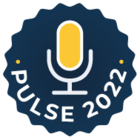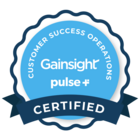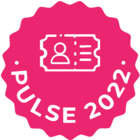We often hear from customers that are uncertain which survey to use between the options of Non-anonymous, Semi-anonymous, and Anonymous. Choosing the “wrong” one for your use case can lead to quite a bit of rework and annoyance, so hopefully this guide helps you choose the “right” one from the very beginning!
Let’s take a closer look at each survey option and also discuss possible use cases.
Option 1: Non-anonymous
This type of survey is most typical and allows you to track each individual recipient in your metrics. You are able to use each Journey Orchestrator Program survey model, including CSAT, NPS, and Generic Survey. You’re also able to follow up with each individual respondent via CTA or email, as discussed in our recent webinar on closed loop NPS surveys.
Sample use case: You want to get feedback from specific contacts at a customer regarding a recent implementation you finished. Based on the tone of feedback, your CSM will follow up appropriately via a Call to Action.
Option 2: Semi-anonymous
Semi-anonymous surveys allow you to hide the individual’s name who responded but still allows you to tie responses back to a company/relationship. As you can see in the below screenshot, choosing a semi-anonymous survey in your program setup limits the program’s ability by only allowing the survey to go out, then forcing the program to end afterward.
Sample use case: You might consider semi-anonymous surveys when conducting virtual chairsides with potentially dozens or even hundreds of end-users per customer. You will likely get more honest feedback by using this tactic while also retaining the ability to tie the responses back to a company and/or relationship. The CSM won’t be able to follow up with each end-user, which is probably a positive thing anyway, since it’s more important to understand the feedback in an aggregate sense and take action where it matters - with the key stakeholders at the customer and perhaps internally with your product team.
Option 3: Anonymous
Anonymous surveys do not allow you to track the customer at the individual or company/relationship level. You can always ask the recipient to voluntarily provide that information as a survey question, but otherwise know that you won’t be able to tie these responses back to any entity at all. A cool benefit of fully anonymous surveys is that you can share an anonymous survey link on your website or send it ad-hoc via email, whereas semi-anonymous and non-anonymous surveys must be sent via Journey Orchestrator or Email Assist.
Sample use case: A great use case for anonymous surveys is for event feedback. You may not necessarily care what company an event attendee belongs to, especially if that person is not an active customer or prospect, but you probably do care about each individual attendee’s feedback so that you can continue improving your event experience. Anonymous surveys are a great way of accomplishing this.






